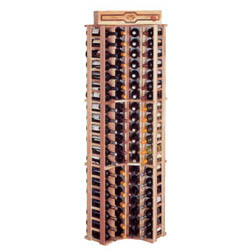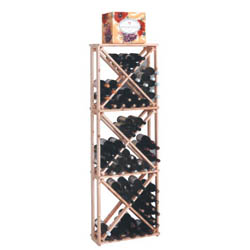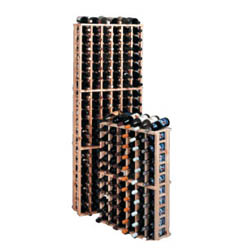The following checklist will allow you to close up your home with confidence whether you leave for a weekend or six months. The first items on the list represent what you must do to partially close your home. You must do all of these and more to complete a total closure. Some of the items may seem silly, that is until you have a problem. Don't cut corners. Do them all.
1. Shut Off Main Water Valve
This is indeed the single most important thing you can do. A broken water pipe or a burst hose can deliver tens of thousands of gallons of water into your home over a period of just a few days. If your valve is hard to operate, it is time to have a plumber install a new main valve. Be sure it is a ball valve and have him install a boiler drain on the house side of the valve. This will allow you to drain the system easily.
2. Fill All Drains - Traps with Water
If you are gone for a few days or a week you don't want sewer gas in your home upon your arrival. A rarely used floor drain or fixture may be just hours away from evaporating the water seal in the trap. Pour water into all fixture traps to fill the trap seal completely.
3. Turn Off all Non-Essential Electricity
Shut down the power to parts of your home that do not need electricity during your absence. If you don't want to hassle with this, then install new arc fault circuit interrupter breakers in your electrical panel. These breakers will immediately turn off if there is a short circuit in your absence.
4. Beware of Lamps
Some people leave lamps on while they are gone. If you have indoor pets this can be a mistake. Fires have started when a lamp is knocked over and the bulb heat ignites combustible material. This is especially true of the high temperature halogen bulbs. If you leave lights on, do so with ceiling or wall mounted fixtures.
5. Arrange for Pickups
Sure, you called to stop your paper and the mail, but what happens if it comes anyway? It wouldn't be the first time. Arrange for a friend or neighbor to check your home each morning and afternoon for boxes, door handle circulars, etc. that may litter your house while you are away.
6. Notify Police and Fire Department
I am fortunate to live in a small village. The police department WANTS us to tell them we are leaving. The officers stop by at random times during the day and night to make sure all doors are closed and all is well. It is a free service. If you are lucky you might have the same or similar service. Stop by the fire department as well and give them a number where you can be reached.
7. Empty Garbage
Sounds crazy, but people forget and there is an awful odor once you get back.
8. Refrigerator Food
Plan ahead. Try to leave your refrigerator as close to empty as possible. Food and drinks that have a shelf life that will expire during your absence should be discarded before you leave.
9. Check Sump Pump
If you have a basement prone to flooding, check to make sure the sump pump works. If you feel the pump may be unreliable or is at the end of its useful life, then install a new one before you leave.
10. Computers - File Storage
Shut down your computers properly and unplug them from power, telephone and cable modems. Surges can blow up your machine in your absence. Back up your data, absolutely make two copies of important data and store one off site.
11. Cold Weather House Checks
If your house is in a cold climate and the outdoor temperature is expected to drop below freezing, you must have a friend or neighbor stop by to make sure your furnace is working. You can drop the thermostat temperature to 60 F unless you are leaving behind pets that need warmth. You just want to make sure the heat is working.
Full House Closure
12. Drain Water Supply System
If there is a chance that the inside of the house will drop below freezing, then you must drain all water from all fixtures and leave the valves open. This can be a major undertaking. The water coming into the house may have to be shut off at the street as well and the main line drained. Keep in mind that the basement can freeze and the incoming water line can freeze and burst!
13. Protect Fixtures and Traps
Non-toxic antifreeze needs to be poured into all sinks and toilets. Don't forget about the water in the toilet tanks! If you live down south where the air is dry, water can evaporate from traps and toilets. You can pour several ounces of mineral oil in floor drains and sink traps to slow this process. Cover toilet bowls with plastic wrap to prevent evaporation.
14. Contact Insurance Agent
Ask the agent what, if anything, needs to be done to make sure your policy will be in full force and all is covered if something goes wrong.
15. Pre-Plan Repairs
Meet with a reliable remodeling contractor before you leave. Give him the name of your insurance agent. Make arrangements that the contractor can secure the property in the event of storm or fire damage in your absence. If you try to do this after the fact from a remote location, you will go nuts. Also, you are first in line with the contractor - like making restaurant reservations.
16. Empty Freezer and Refrigerator
Need I say more? Discard or give away to a food bank / free store any food that could spoil in your absence.
17. Arrange for Power and Fuel Shut Offs
If you can turn off the power and fuel, do so. Arrange for professional help to make sure all systems are protected.
18. Equalize Interior Humidity
Water vapor in the trapped air inside can condense as the temperature slowly drops in your absence. Mold growth can and will happen. It can cause extensive damage. You must arrange for windows to be cracked open and then closed over time once the interior humidity has dropped so that condensation is not a risk.
19. Store Valuables Off Site
If you have anything of real value, you must store it someplace secure. Purchase a really good fire safe and store important papers/documents in it. Place the safe in a low spot, but not someplace where it is subject to flooding. Remember, much of the heat from house fires goes up, not down.
20. Get a Guard
Somehow, someway make arrangements to have someone stop by and extensively check the house on a regular basis. You need to know if all is well.
Related Column:
Home Alone - Winterizing Your Home
Column B386






